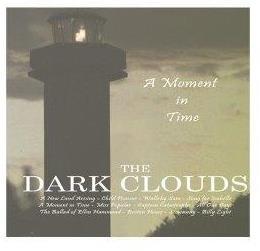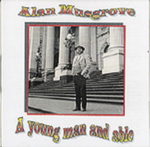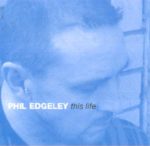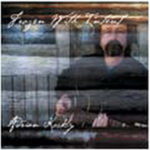Description
CD review by Tony Smith
Being a fan of historical folk music, I have a definite weakness for albums which address a single theme or tell a story from Australia’s past.
In this album of songs, Lisa and Gary Webster and company have 12 stories from South Australia’s Eyre Peninsula.
The Dark Clouds might form around the Websters, who are the main vocalists and songwriters and players of plucked instruments, but they include also Benita Doughty (keyboards/ organ), Ben Christensen (double bass), Peter Mihalaris (bass/ backing vocals), Chris Atkinson (drums/ percussion), Alex Thomas (violin), Michael Hester (flute), Kesi Webster (backing vocals) and Pete the Greek (djoura).
Peter Mihalaris recorded and mixed the album at Atlantis Studios, Port Lincoln.
The tracks are presented in the chronological order of the stories they tell: ‘Captain Catastrophe’ (1802), ‘A New Land Arising’ and ‘All Our Days’ (1839), ‘Child Pioneer’ (1840), ‘Billy Light the Whaler’ (c.1840), ‘Song for Isabella’ (1845), ‘The Ballad of Ellen Hammond’ (1860), ‘Boston House’ (c.1885), ‘Wallaby Sam’ (c.1880s), ‘A Moment in Time’ (c.1890), ‘Miss Popular’ (c.1900s) and ‘Stowaway’ (c.1928).
This gives a feeling for the early history of the Peninsula.
‘All Our Days’ is one of the most interesting songs, expressing Captain John Bishop’s yearnings to his wife Mary, who died with their baby.
‘Child Pioneer’ is written at the memorial to Frank Hawson, a boy left alone and vulnerable in a bush block disputed by the Indigenous people.
‘Boston House’ adds variety, telling the story of Frederick Samuel Sison.
‘A Moment in Time’ eulogises William Argent, farming pioneer of the Donington Peninsula.
Nor are female pioneers neglected as the titles of the tracks show, as ‘Miss Popular’ is about a mysterious Fanny and ‘Stowaway’ tells of the adventures of Jeanne Day.
Some songs are in first person, some address the characters in second person and some are in third person, adding some variety.
The arrangements vary also and the instruments are strong.
At times I wished the voices could be set into the foreground more firmly.
Given that the lyrics are sometimes in a predictable rhyming pattern but sometimes in free verse, the listener needs to be able to anticipate and relax rather than to be concentrating on the lyrics sheet.
The narratives are densely packed and the choruses with repetitive lyrics comparatively brief.
The stories are worth telling and repay careful listening.
Dark Clouds express ‘special thanks to Margaret Tilsner for her tireless enthusiasm and support in historical research’.
Well they might, because in these 12 tracks there is a wealth of historical detail, bringing people, places and times to life.
Visitors to the area could almost use the CD as a guide to the highlights for tourism.
While these songs are primarily about the characters and particularly the settlers rather than Indigenous peoples, there are mentions of numerous features of the landscapes.
The album, obviously a labour of love, made the Eyre Peninsula come alive for this outsider.




